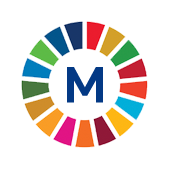 6.2.1 Removal of excreta for treatment off-site, by type of settlementsMetadataPeriod: Every four yearsYear: 2025 |
 6.2.1 Removal of excreta for treatment off-site, by type of settlementsMetadataPeriod: Every four yearsYear: 2025 |
| METADATA |
| Indicator information |
| Definition and methodology |
| Data source type and data collection method |
| Notes |
| ID of global indicator |
| Metadata update |
| Global metadata |
| Indicator information | Top |
| Indicator | |
6.2.1 Removal of excreta for treatment off-site, by type of settlements | |
| Global indicator name | |
6.2.1 Proportion of population using (a) safely managed sanitation services and (b) a hand-washing facility with soap and water | |
| Target | |
6.2 By 2030, achieve access to adequate and equitable sanitation and hygiene for all and end open defecation, paying special attention to the needs of women and girls and those in vulnerable situations | |
| Goal | |
Goal 6. Ensure availability and sustainable management of water and sanitation for all | |
| Definition and methodology | Top |
| Definition | |
Percentage of household members using an improved on-site sanitation facility from which a service provider has removed waste for treatment off-site.
The following counts in the improved sanitation facilities here: flush to septic tank and other improved sanitation facilities: flush/pour flush (flush to pit latrine), pit latrine (ventilated improved pit latrine, pit latrine with slab) and composting toilet. The contents was removed by a service provider (to a treatment plant, to don't know where) or it is not known where the contents was emptied. | |
| Methodological explanations | |
Data sources included in the JMP database are:
• Censuses, which in principle collect basic data from all people living within a country and led by national statistical offices. | |
| Method of calculation | |
The number of household members using an improved on-site sanitation facility from which a service provider has removed waste for treatment off-site is divided by the members of all households and multiplied by 100.
The observation unit is members of all surveyed households. | |
| Unit of measure | |
% | |
| Available disaggregation | |
Type of settlements | |
| Territorial level | |
Republic of Serbia | |
| Data source type and data collection method | Top |
| Data source | |
Multiple Indicator Cluster Survey (MICS) | |
| Periodicity of data collection | |
Every four years | |
| Notes | Top |
| ID of global indicator | Top |
C060201 | |
| Metadata update | Top |
| 5/6/2025 | |
| Global metadata | Top |
https://unstats.un.org/sdgs/metadata/files/Metadata-06-02-01a.pdf https://unstats.un.org/sdgs/metadata/files/Metadata-06-02-01b.pdf | |